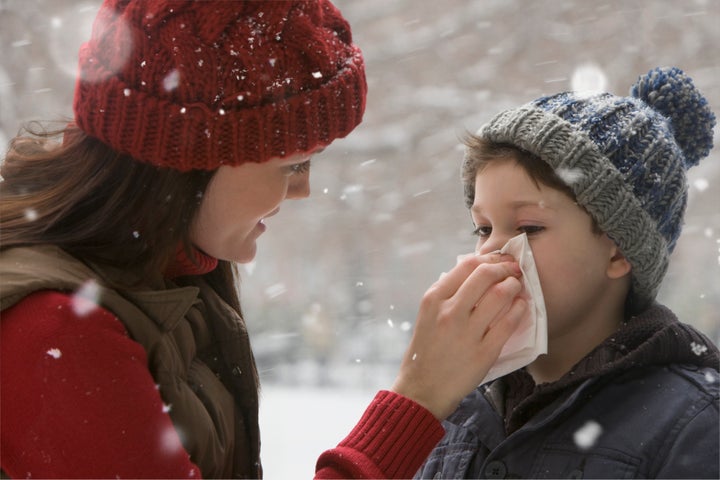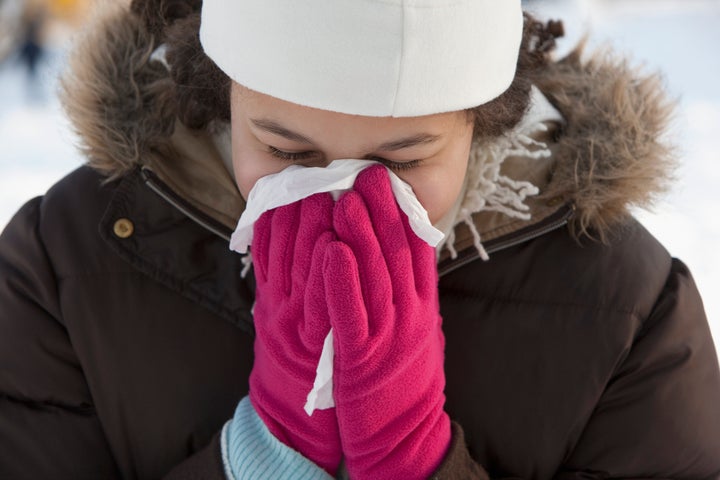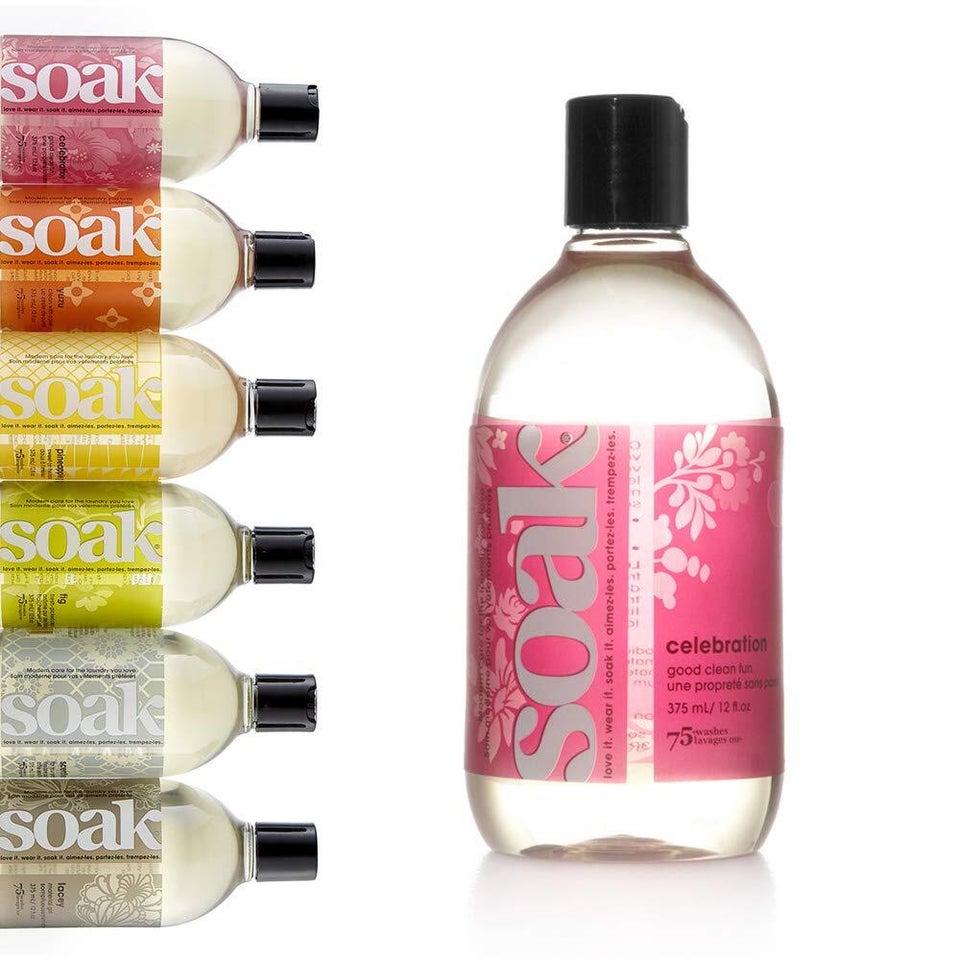
Before tossing on a beanie or layering up with your puffer jacket, think about how much of the outside world it has touched ― public transportation, shared seating and lots of other potentially gross surfaces. And for some weird reason, most of us don’t launder them nearly as often as our regular clothes, if at all.
If you’re part of the 38% of people who only wash their coats once a year or less — or the 28% who wash their scarves with that same frequency — there’s good news, according to Dr. Thomas A. Russo, chief of the University at Buffalo’s division of infectious diseases.
“We tend to launder our clothes, but we’re much less likely to launder or take to the dry cleaners our coats, hats and scarves,” Russo told HuffPost. “At the end of the day, there’s really not many infectious diseases that are transmitted by our clothes. Is there a potential risk of getting infected from your clothes? Yes, but it’s a very low number.”
What Builds Up On Outerwear Items In Storage
That goes for clothes that have sat in storage, too.
“Bacteria and viruses shouldn’t last for months in your storage bins,” said Dr. Jameela Yusuff, SUNY Downstate chief medical officer. “Bacteria are there for at most a couple of weeks. The virus that causes COVID can last a couple of days, so it doesn’t last as long. You shouldn’t have issues with bacteria and viruses.”
You’re more likely to encounter environmental allergens like dust mites and indoor allergens such as pet dander, which can accumulate on clothes while in storage due to humidity. Mold, too, if the items have been stored in a particularly damp spot, hence why plastic storage bins or shrink bags are preferable to keeping coats and cold weather clothes in cardboard boxes during the off-season.
Exposure to these allergens can activate symptoms including sneezing, a runny nose and watery, itchy eyes in people who have underlying allergies or sensitivities. They can also potentially exacerbate asthma symptoms and worsen underlying eczema, according to Dr. Farnaz Tabatabaian, a USF Health allergy and immunology specialist.
While Dr. Lakiea Wright, an allergist-immunologist at Brigham and Women’s Hospital in Boston, said these allergens “are really microscopic,” she pointed out that you might be able to see a film over stored clothes. Even if you don’t, “it is a good idea to wash the outerwear to try to minimize exposure to allergens,” Wright said.
Tabatabaian recommended washing outerwear items in hot water and running them through the dryer because heat ensures the allergen “dissipates significantly.”
And give clothes and accessories a wash before they go back into storage, too. “They should go in clean and then when you take them out, they should be clean,” Yusuff said.
So What Happens If You Wear Your Coat Outside And Don’t Wash It Often?
Those clean, fresh-out-of-storage clothes now head out to the office, the grocery store, football tailgates, hiking adventures and more. While they will inevitably come into contact with viral particles — for example, microorganisms that cause hepatitis A and B viruses, staphylococcus, salmonella hadar and salmonella typhimurium — pollen remains less of an issue because of the cold climate.
Even still, “your clothes may be contaminated with enteric pathogens, viruses or bacteria, that could cause a variety of intestinal diseases,” Russo clarified. But to do that, Russo said, “They have to get into your intestinal tract. They have to go from clothes to your hands and then your hands need to touch your mouth. Or, if it’s a respiratory pathogen, it needs to go to your hands to your eyes and mouth.”
Dr. Irfan Hafiz, an infectious disease specialist at Northwestern Medicine, explained that “most of the transmission that’s occurring is really person to person through droplets” and therefore, “inanimate objects are not the major vector there.”
How Often To Wash Outerwear Items Amid Regular Use
Just because the risk of getting sick from bacteria or viral particles sitting on your coats, gloves and scarves remains low doesn’t mean they should never see the laundry room. Yusuff advised washing cold-weather garments and accessories three to five times per season, and more often for items such as gloves that frequently come into contact with the likes of elevator buttons, doors and subway poles.

“Gloves are the most vulnerable to coming into contact with everything and anything,” Yusuff said. “Those you want to wash on a frequent basis and how frequently and depends on your usage. If you take the subway, the bus and you’re pressing elevator buttons and opening a lot of doors, you should wash that on a more regular basis — weekly, at the minimum.”
If your gloves don’t lend themselves to being washed (hello, leather!), Russo suggested swapping pairs throughout the week to give viral particles time to dissipate.
“Have a couple of pairs of gloves you can rotate, or maybe when you’re on the subway, wear your cotton mittens that you could run through the wash,” he said. “Because if you put everything through the wash, that’s usually enough to inactivate any pathogens that might have contaminated your clothing.”
Should you find yourself in a tightly packed crowd “where you felt other people were depositing respiratory secretions on your scarf,” Russo said, “go ahead and either do the rotation thing, or if it lends itself to cleaning, [do that] before you go ahead and use it again. If you are in close quarters with a lot of people breathing on you, that is something you want to be sensitive about.”
And of course, the sooner you wash visibly soiled items, the better. “If something is dirty and contaminated, wash it sooner rather than later,” Yusuff said. “It’s just really common sense.”
How To Wash Outerwear
When it comes to how to launder outwear, first and foremost, “follow the manufacturer’s recommendation on the tag,” Hafiz said. “And don’t shake it so you don’t get particles in the air.”
Save for garments that require dry cleaning, Hafiz said washing using “the hottest water the manufacturer recommends” with detergent and bleach (on bleach-safe fabrics) will “kill any virus.” Then finish off by throwing the items in the dryer on the recommended heat setting.
“That generally is good enough to get stuff out without damaging it,” he said.
Hafiz and Russo agree that wearing a face mask remains the best way to protect yourself from viral particles you and your outerwear come into contact with daily.
“If you’re wearing a mask, that protects you if there’s any concern that maybe your scarf was contaminated,” Russo said. “If you wear a mask, by the way, it keeps your face really warm.” Win-win.
